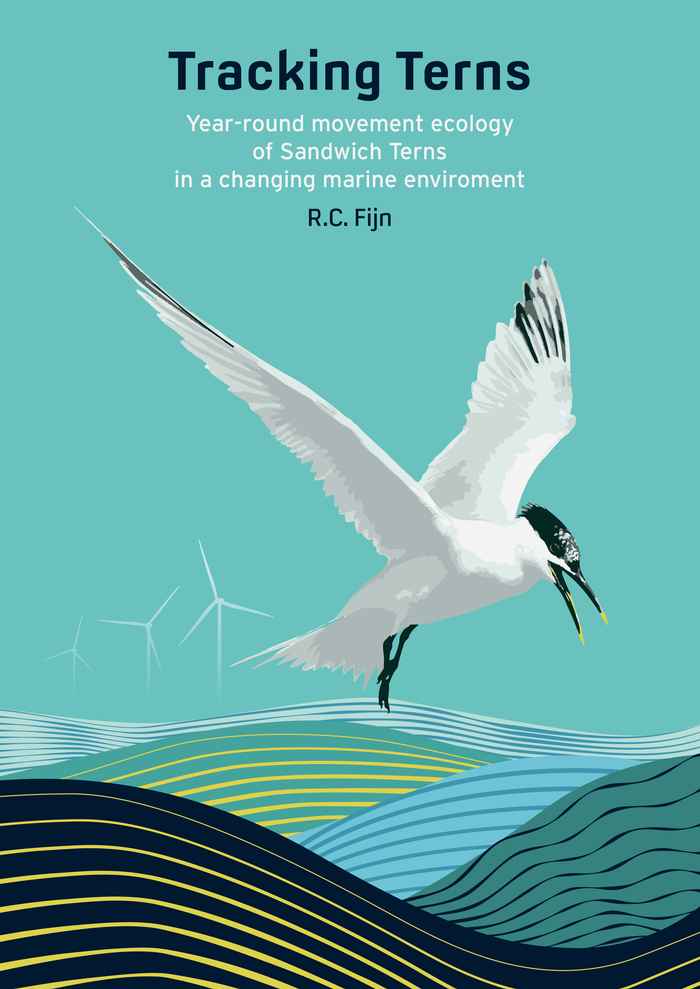PhD defence ceremony by Ruben Fijn
- Date
- 10 October 2024
- Time
- 13:00
- Location
- Agnietenkapel

Seabirds are excellent indicators of the health of the marine ecosystem. Studying and monitoring their distribution, abundance, diet and productivity can signal changes in prey availability, pollution, and non-natural mortality. Studying their foraging strategies and particularly (mechanisms in) habitat choice forms an important part of such studies. An important driver of the foraging strategy of seabirds is the way they transport prey to the colonies. Bulk-prey loaders store food during trips and regurgitate that to chicks on return. Single-prey loaders deliver individual prey items to their offspring. This latter strategy constrains the size of their foraging range. The aim of this thesis was to study movement of a single-prey loading seabird in relation to its environment and potential consequences of the interaction with anthropogenic developments at sea.
Using modern tracking technology, the thesis of Ruben Fijn presents a total of eleven chapters in which various studies on the foraging ecology and habitat selection of Sandwich Terns Thalasseus sandvicensis are described. These iconic seabirds of the North Sea are single-prey loading seabirds for unpredictable prey items in a heterogeneous foraging habitat close to the coast. This subject received less attention in contrast to long-ranging seabirds further offshore, yet, with the increasing expansion of anthropogenic activities in the coastal zone, it is of particular interest.
He therefore not only studied movement and foraging behaviour, but also the effects of interaction between seabirds and anthropogenic developments at sea. To do so he needed to develop several novel methods to track terns and study prey items concurrently (Part I). Using these methods, he was able to determine and predict habitat use of Sandwich Terns during the breeding season (Part II) as well as movement outside the breeding season (Part III). Finally, he studied several aspects of the effect of anthropogenic activities within their foraging range on their movement ecology (Part IV). In the synthesis of his thesis Ruben summarizes all findings and discussed what tracking terns can teach us about the foraging ecology of seabirds, how our results can be used and future directions of tracking work on terns and seabirds in general.
